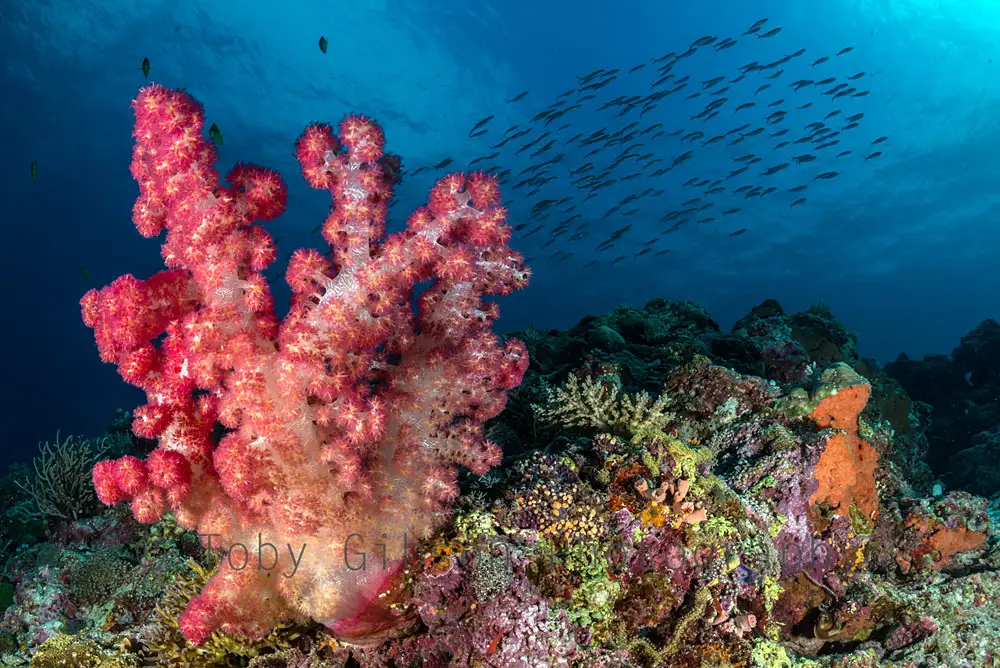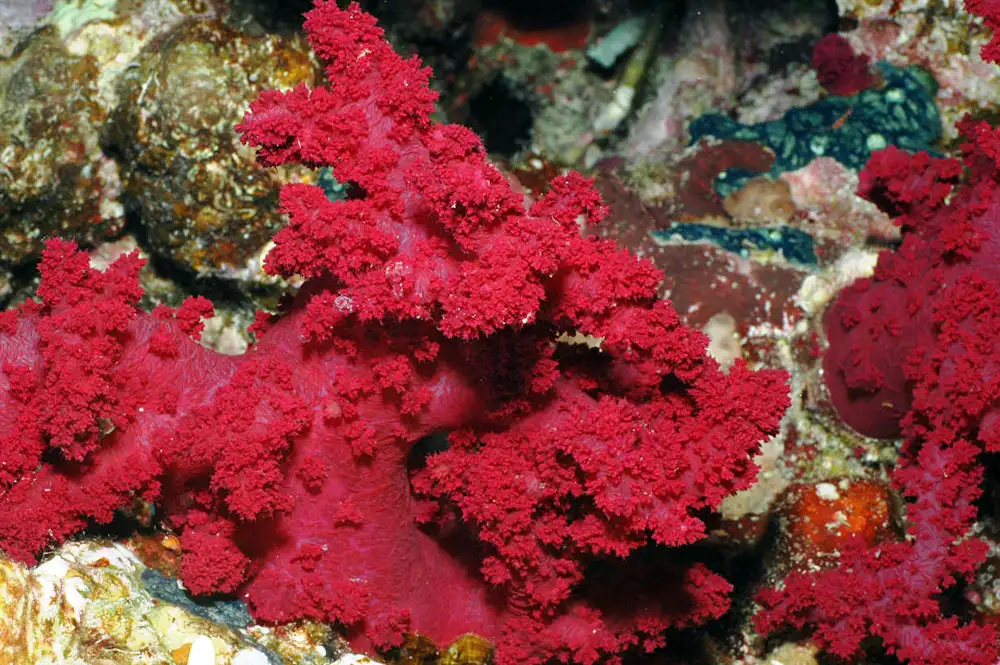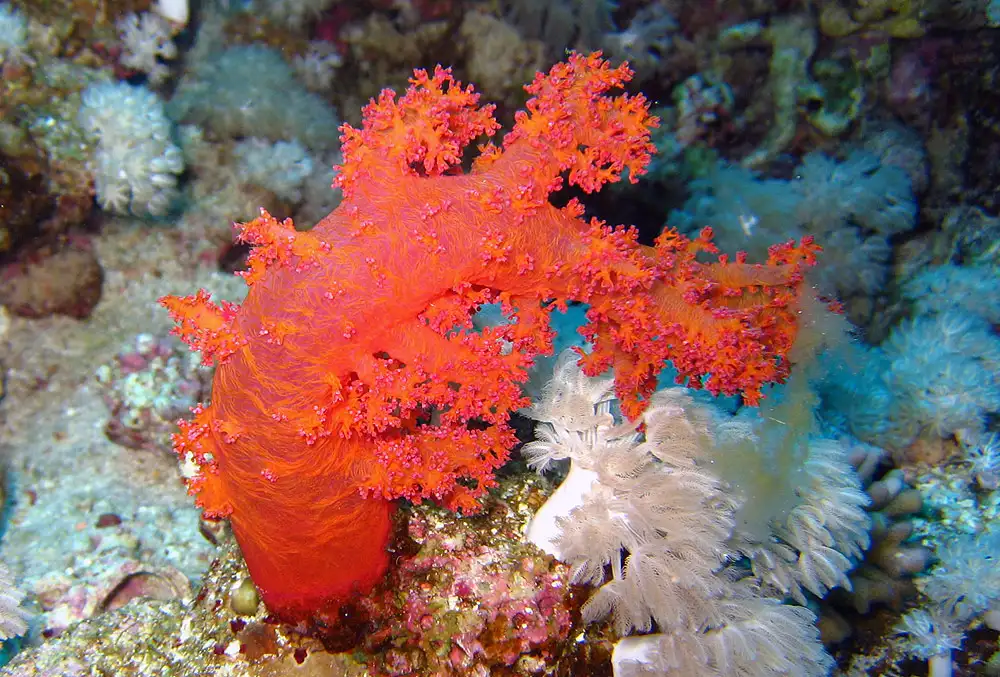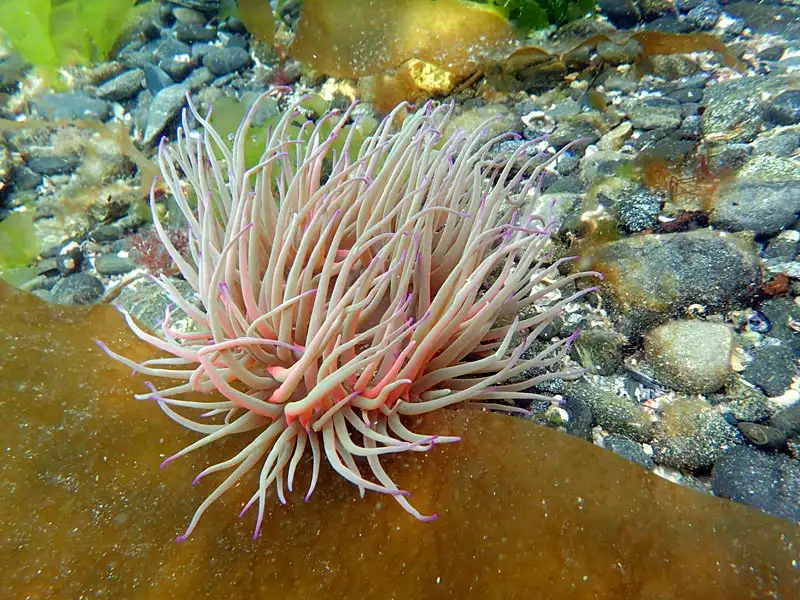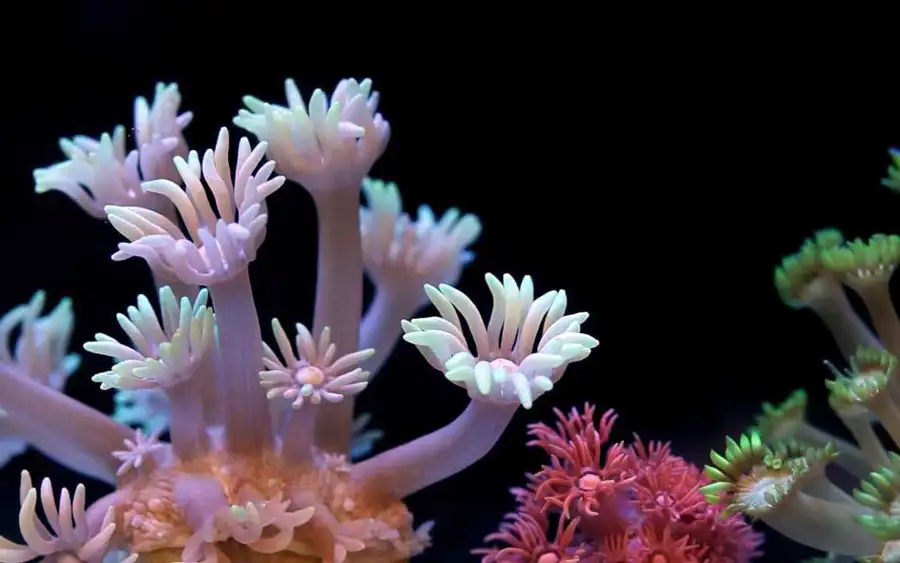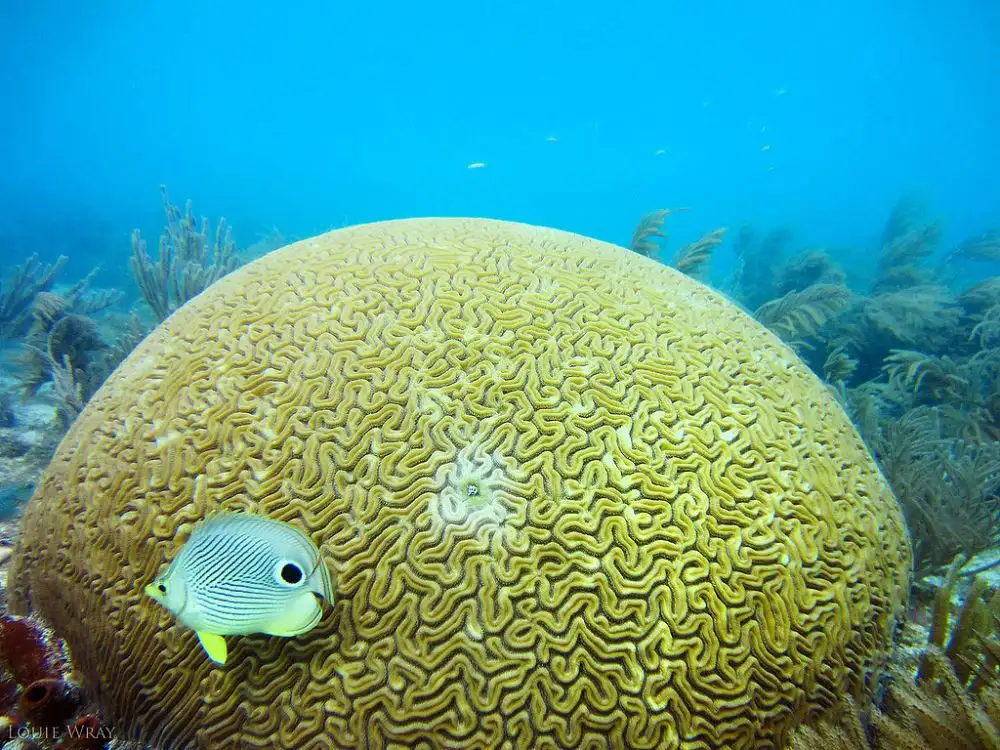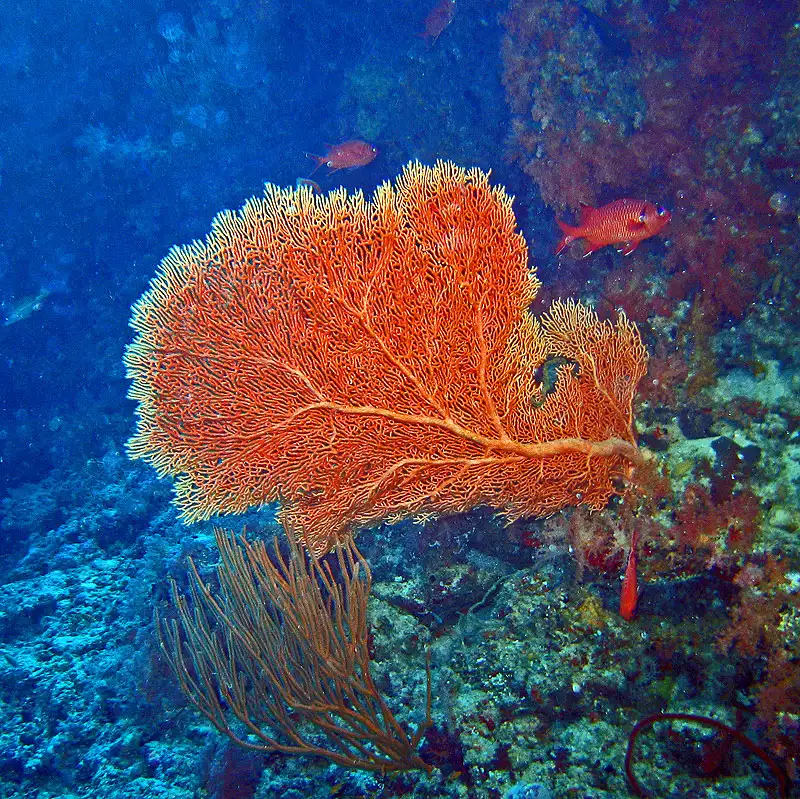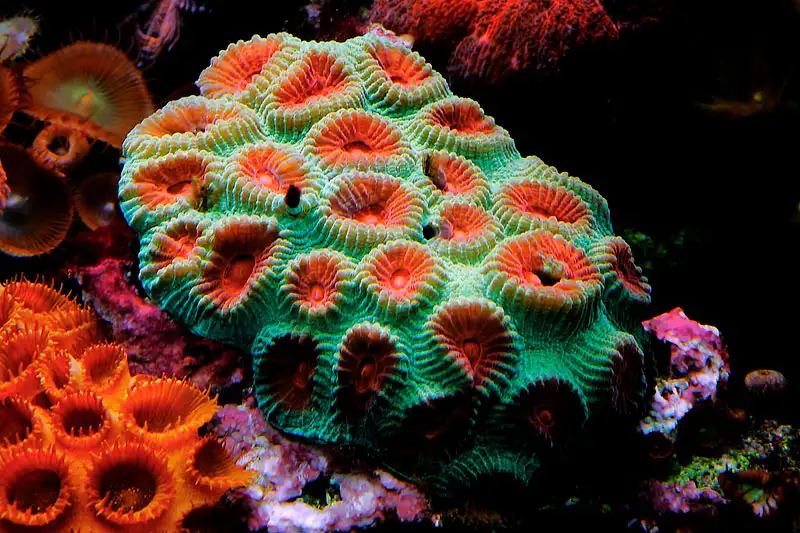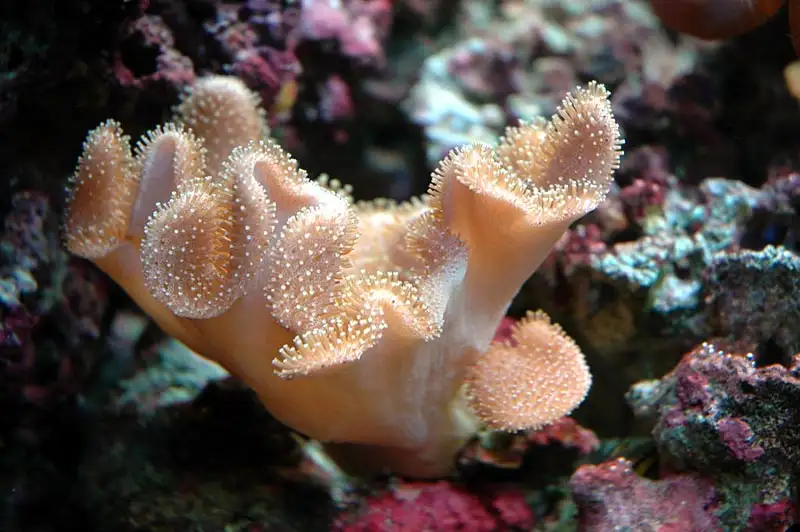Carnation Soft Coral
IUCN
LCBasic Information
Scientific classification
- name:Carnation Soft Coral
- Scientific Name:Dendronephthya sp.
- Outline:Echinodermata
- Family:Alcyonacea Dendronephthya
Vital signs
- length:Colony height 10–40 cm (larger in ideal flow)
- Weight:Not standardized; varies with colony size
- lifetime:Multi‑year in high‑flow, food‑rich habitats
Feature
Azooxanthellate; suspension‑feeds in strong currents; sensitive to flow/food changes.
Distribution and Habitat
Indo‑Pacific outer slopes and passes with strong currents (10–40+ m).
Appearance
Arborescent, transparent coenenchyme with sclerites; vivid colours; dense polyps.
Details
Dendronephthya sp. (carnation/tree soft corals) are azooxanthellate octocorals that rely onsuspension feeding rather than photosynthesis. They thrive in moderate–strong currents and capture plankton and organic particulates, displaying vivid colours (red, pink, orange, yellow, white, purple).
Ecology & Biology
Feeding: polyps intercept copepods, amphipods, larvae and POM from flow.
Energy: without symbionts they require continuous particulate food and stable flow.
Reproduction: sexual broadcast/planulation plus asexual fragmentation and re‑attachment.
Identification
Colonies are arborescent; the transparent/sem i‑transparent coenenchyme contains diverse sclerites giving a granular texture. Colour is highly variable and often partitioned among branches, coenenchyme and polyp crowns; brown hues typical of zooxanthellate soft corals are absent.
Size & Longevity
Height: typically 10–40 cm (larger at ideal sites).
Life: multi‑year in high‑flow, food‑rich habitats; rapid decline under stress.
Range & Habitat
Indo‑Pacific outer slopes, passes and headlands with moderate–strong currents and clear water, usually 10–40+ m; often on shaded faces.
Threats & Conservation
Sedimentation/turbidity smothers polyps.
Reduced flow/food causes energy deficits and collapse.
Collection has low survival; regulate trade and transport.
IUCN: generally Not Evaluated (NE) at species level.
FAQ
Q1. Suitable for beginners? No—being azooxanthellate, they need continuous particulate feeding and strong/oscillating flow.
Q2. Polyps closed during the day? Extension depends on flow/food and tides.
Q3. Distinction from Nephthea/Scleronephthya? More transparent and vividly coloured; lacks brown symbiont tones; confirm with sclerites.
Q4. Lighting? Prefer low light with high flow; strong light encourages film/algae growth.

